Презентація на тему «Raffaello Sanzio da Urbino»
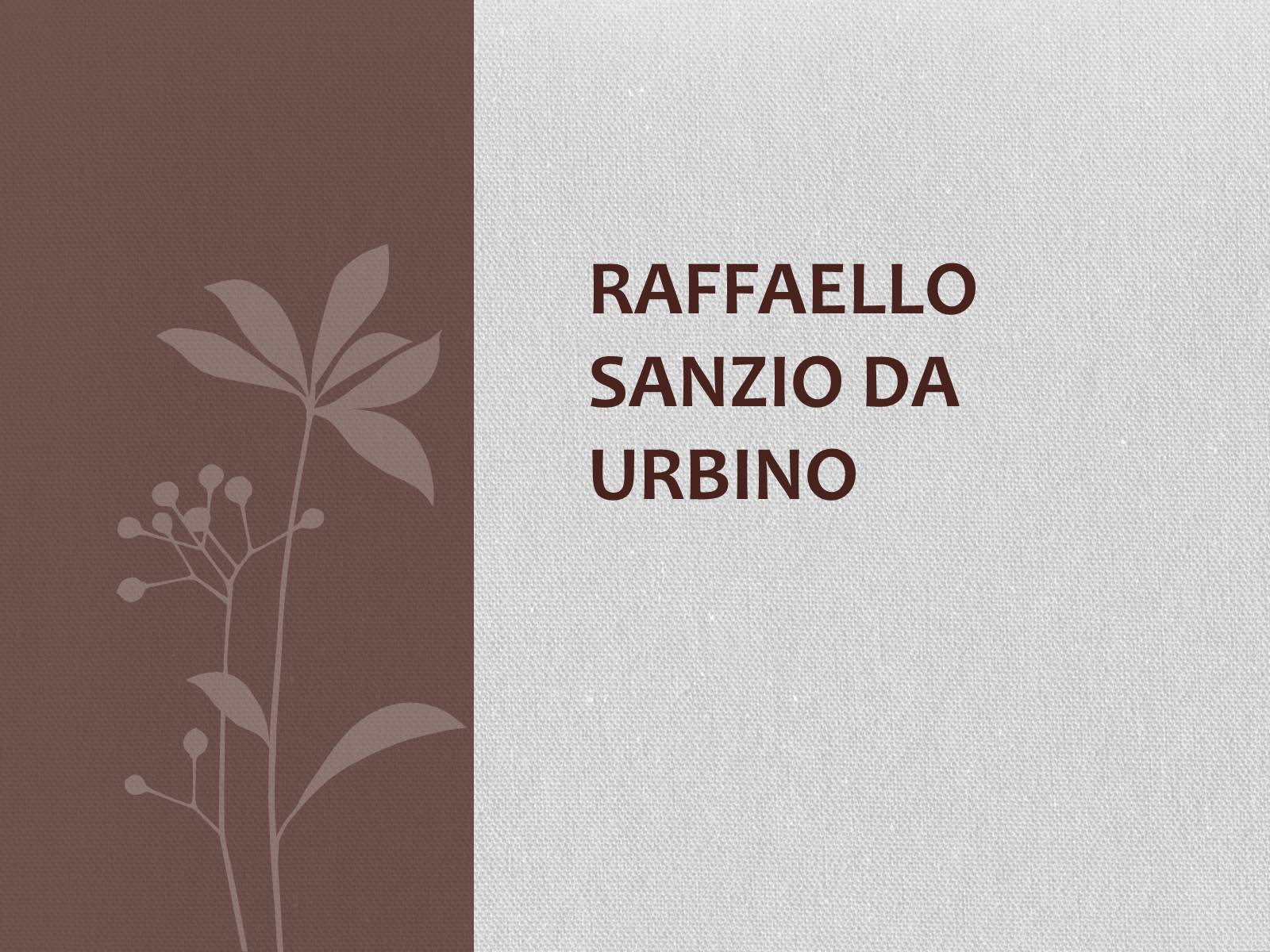
Raffaello Sanzio da Urbino
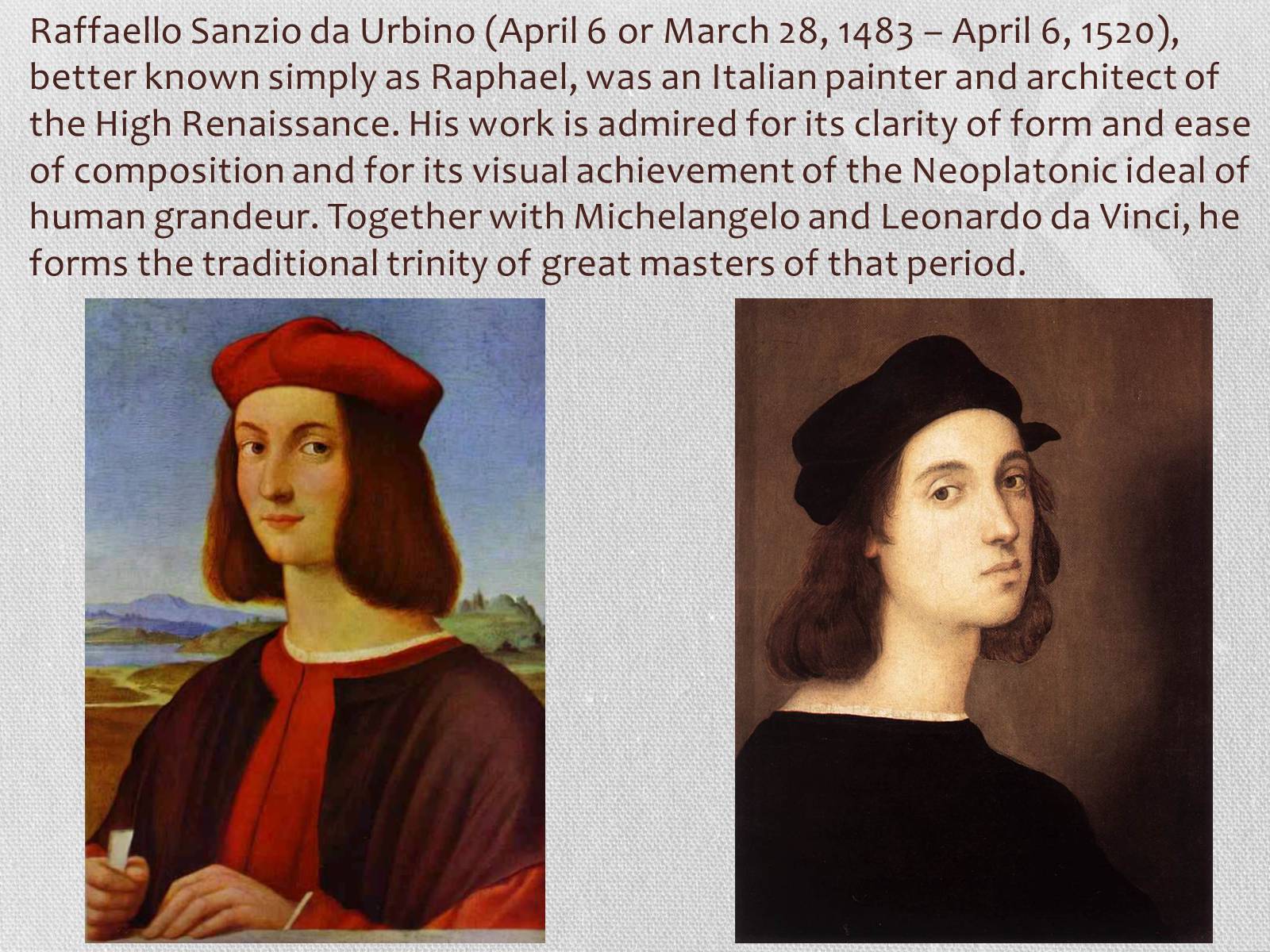
Raffaello Sanzio da Urbino (April 6 or March 28, 1483 – April 6, 1520), better known simply as Raphael, was an Italian painter and architect of the High Renaissance. His work is admired for its clarity of form and ease of composition and for its visual achievement of the Neoplatonic ideal of human grandeur. Together with Michelangelo and Leonardo da Vinci, he forms the traditional trinity of great masters of that period.

Urbino
Raphael was born in the small but artistically significant Central Italian city of Urbino in the Marche region, where his father Giovanni Santi was court painter to the Duke. The reputation of the court had been established by Federico III da Montefeltro, a highly successful condottiere who had been created Duke of Urbino by the Pope—Urbino formed part of the Papal States—and who died the year before Raphael was born.

Early life
His mother Màgia died in 1491 when Raphael was eight, followed on August 1, 1494 by his father, who had already remarried. Orphaned at eleven, Raphael's formal guardian became his only paternal uncle Bartolomeo, a priest, who subsequently engaged in litigation with his stepmother. He probably continued to live with his stepmother when not staying as an apprentice with a master.
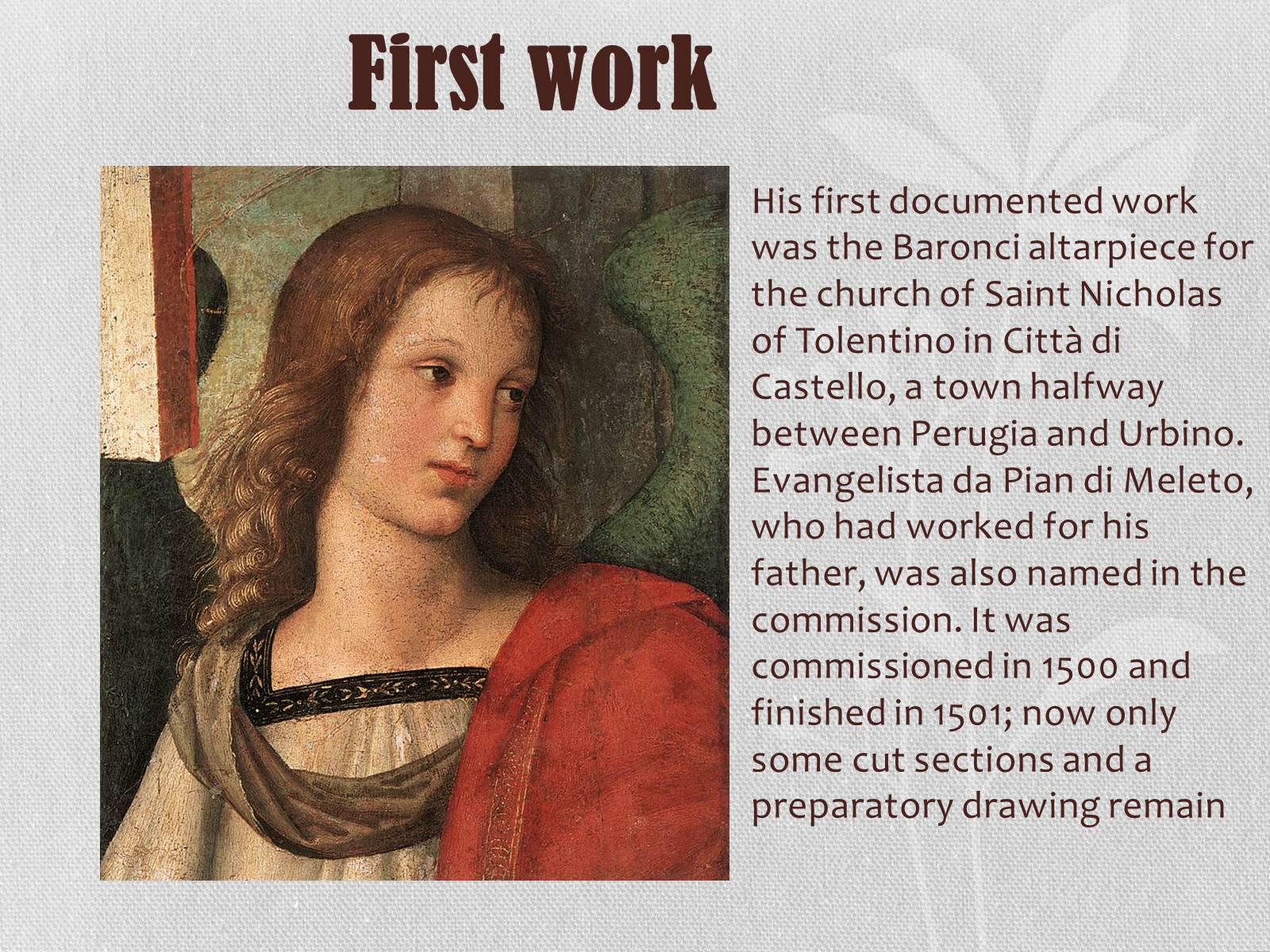
First work
His first documented work was the Baronci altarpiece for the church of Saint Nicholas of Tolentino in Città di Castello, a town halfway between Perugia and Urbino. Evangelista da Pian di Meleto, who had worked for his father, was also named in the commission. It was commissioned in 1500 and finished in 1501; now only some cut sections and a preparatory drawing remain
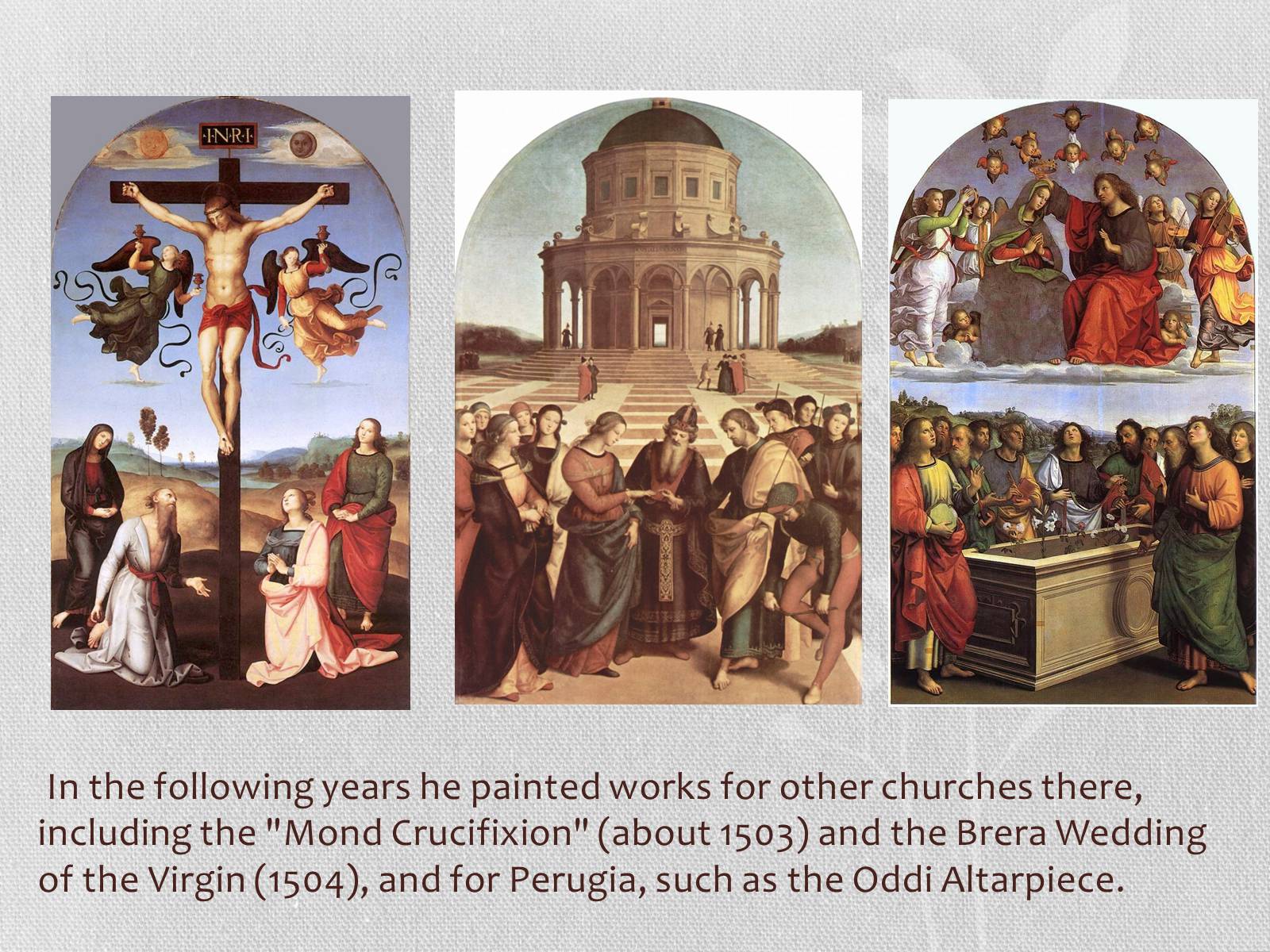
In the following years he painted works for other churches there, including the "Mond Crucifixion" (about 1503) and the Brera Wedding of the Virgin (1504), and for Perugia, such as the Oddi Altarpiece.
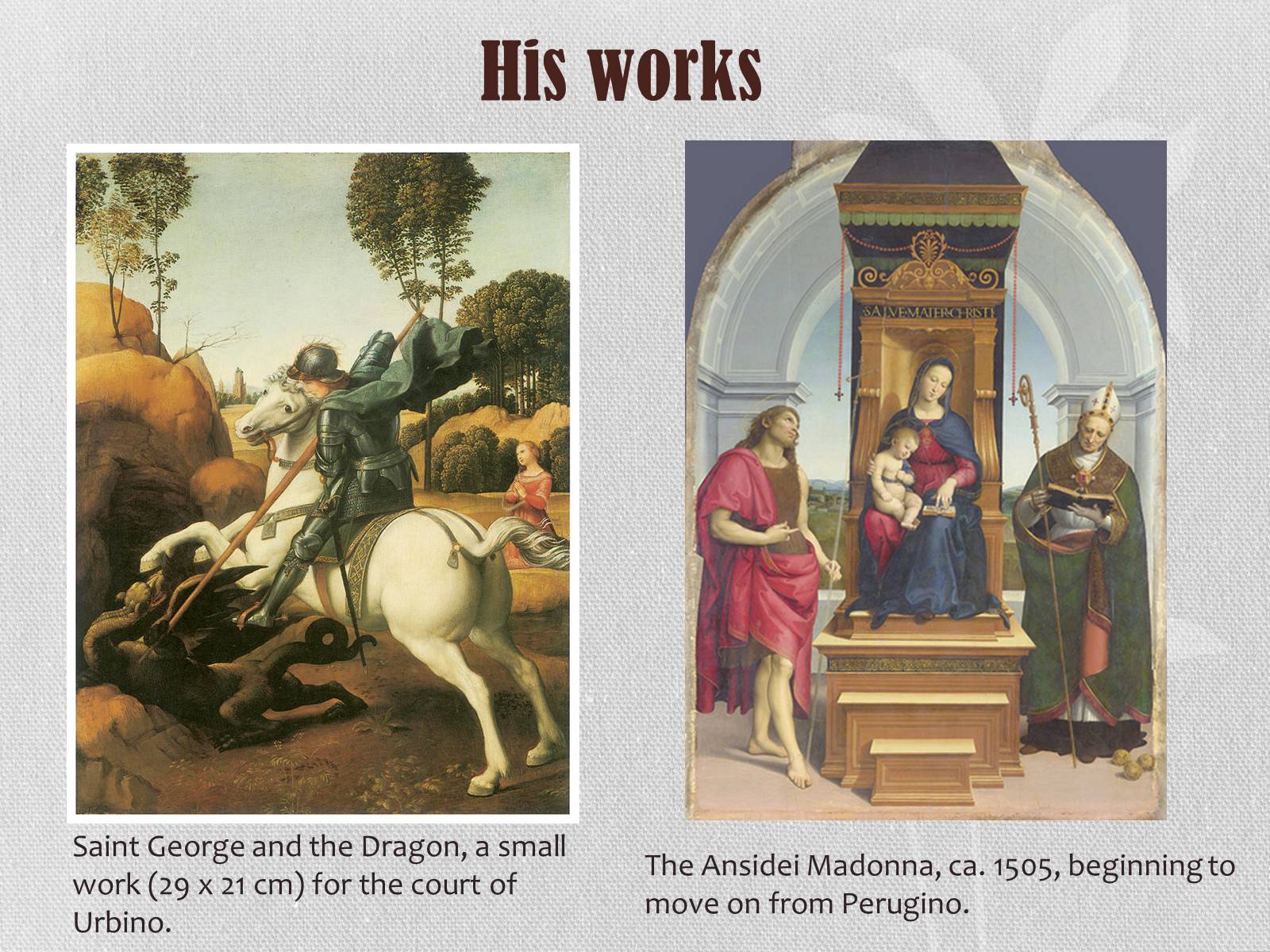
His works
Saint George and the Dragon, a small work (29 x 21 cm) for the court of Urbino.
The Ansidei Madonna, ca. 1505, beginning to move on from Perugino.

The Madonna of the Meadow, ca. 1506, using Leonardo's pyramidal composition for subjects of the Holy Family.
Saint Catherine of Alexandria, 1507, borrows from the pose of Leonardo's Leda.

Deposition of Christ, 1507, drawing from Roman sarcophagi.
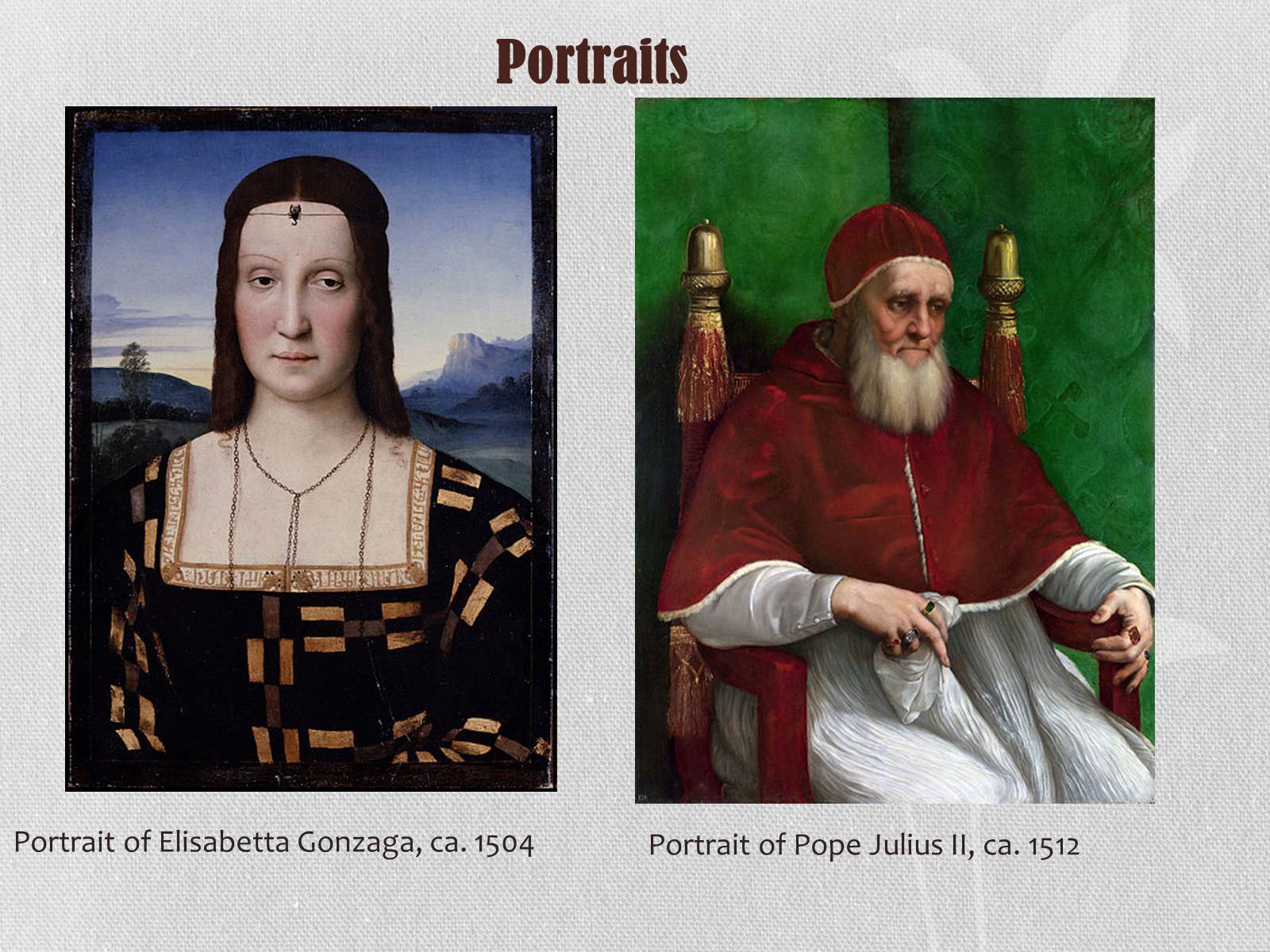
Portraits
Portrait of Elisabetta Gonzaga, ca. 1504
Portrait of Pope Julius II, ca. 1512
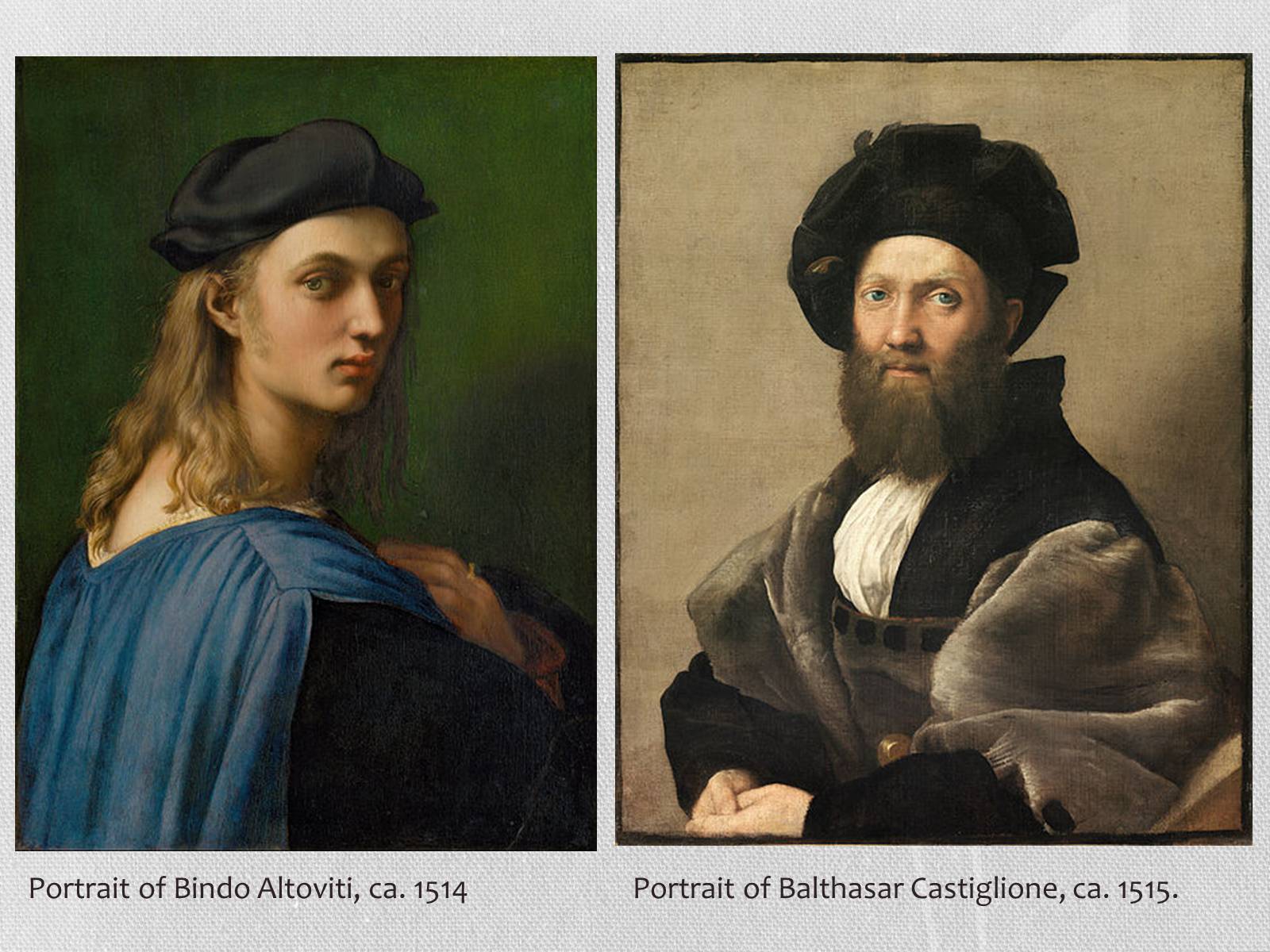
Portrait of Bindo Altoviti, ca. 1514
Portrait of Balthasar Castiglione, ca. 1515.

Drawings
Study for soldiers in this Resurrection of Christ, ca 1500.
Lucretia, engraved by Raimondi after a drawing by Raphael.
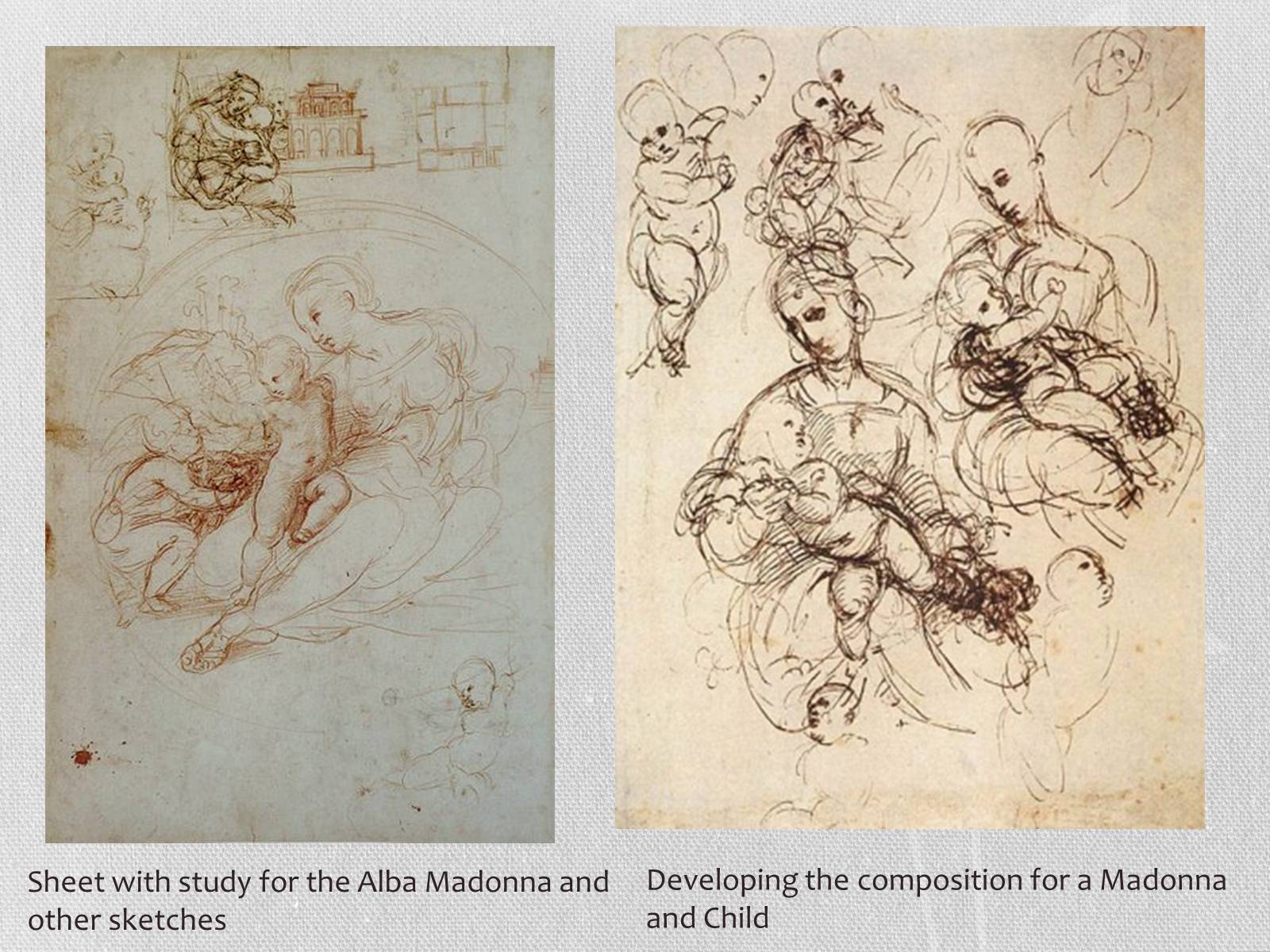
Sheet with study for the Alba Madonna and other sketches
Developing the composition for a Madonna and Child
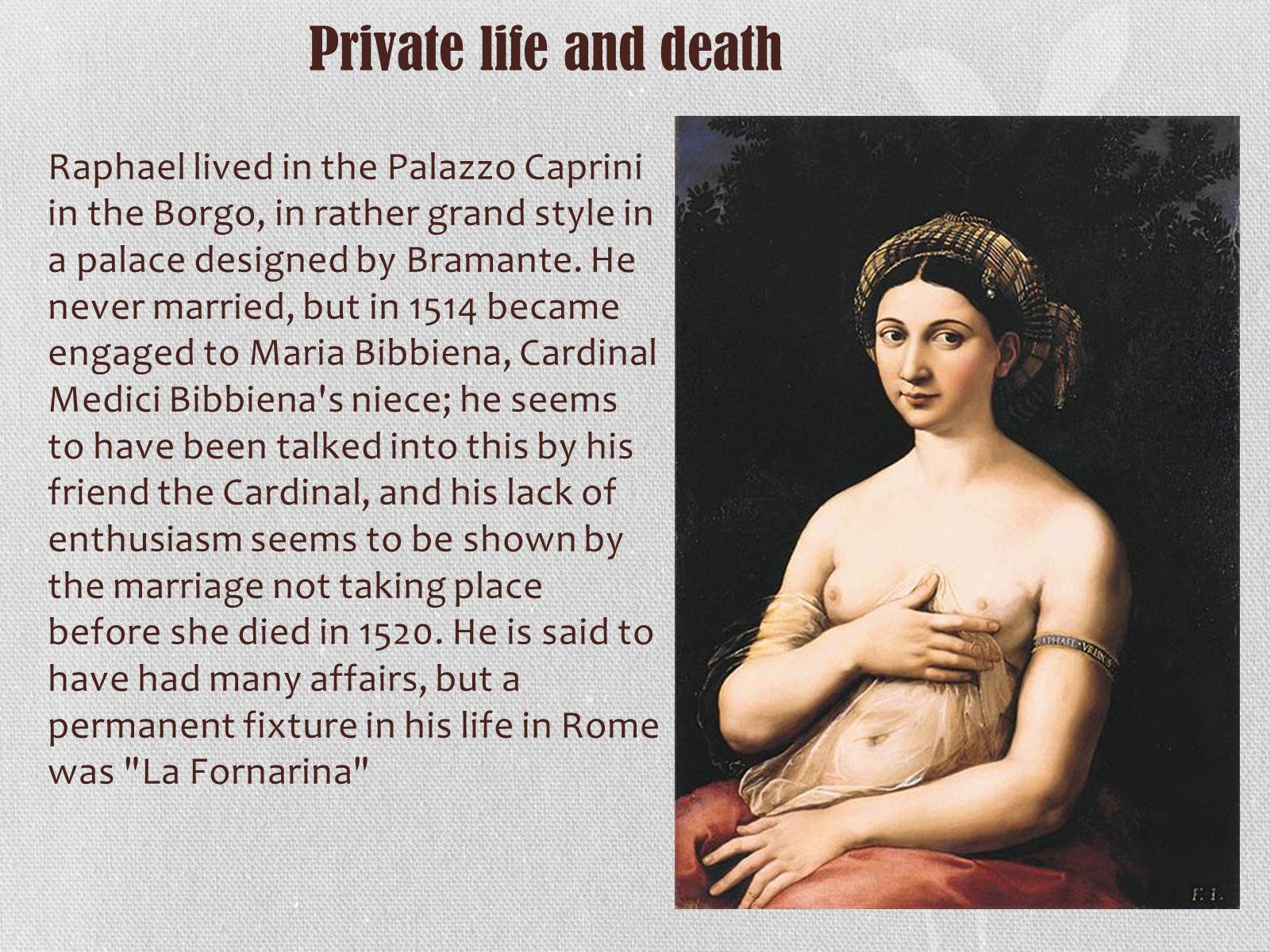
Private life and death Private life and death
Raphael lived in the Palazzo Caprini in the Borgo, in rather grand style in a palace designed by Bramante. He never married, but in 1514 became engaged to Maria Bibbiena, Cardinal Medici Bibbiena's niece; he seems to have been talked into this by his friend the Cardinal, and his lack of enthusiasm seems to be shown by the marriage not taking place before she died in 1520. He is said to have had many affairs, but a permanent fixture in his life in Rome was "La Fornarina"

He was made a "Groom of the Chamber" of the Pope, which gave him status at court and an additional income, and also a knight of the Papal Order of the Golden Spur.
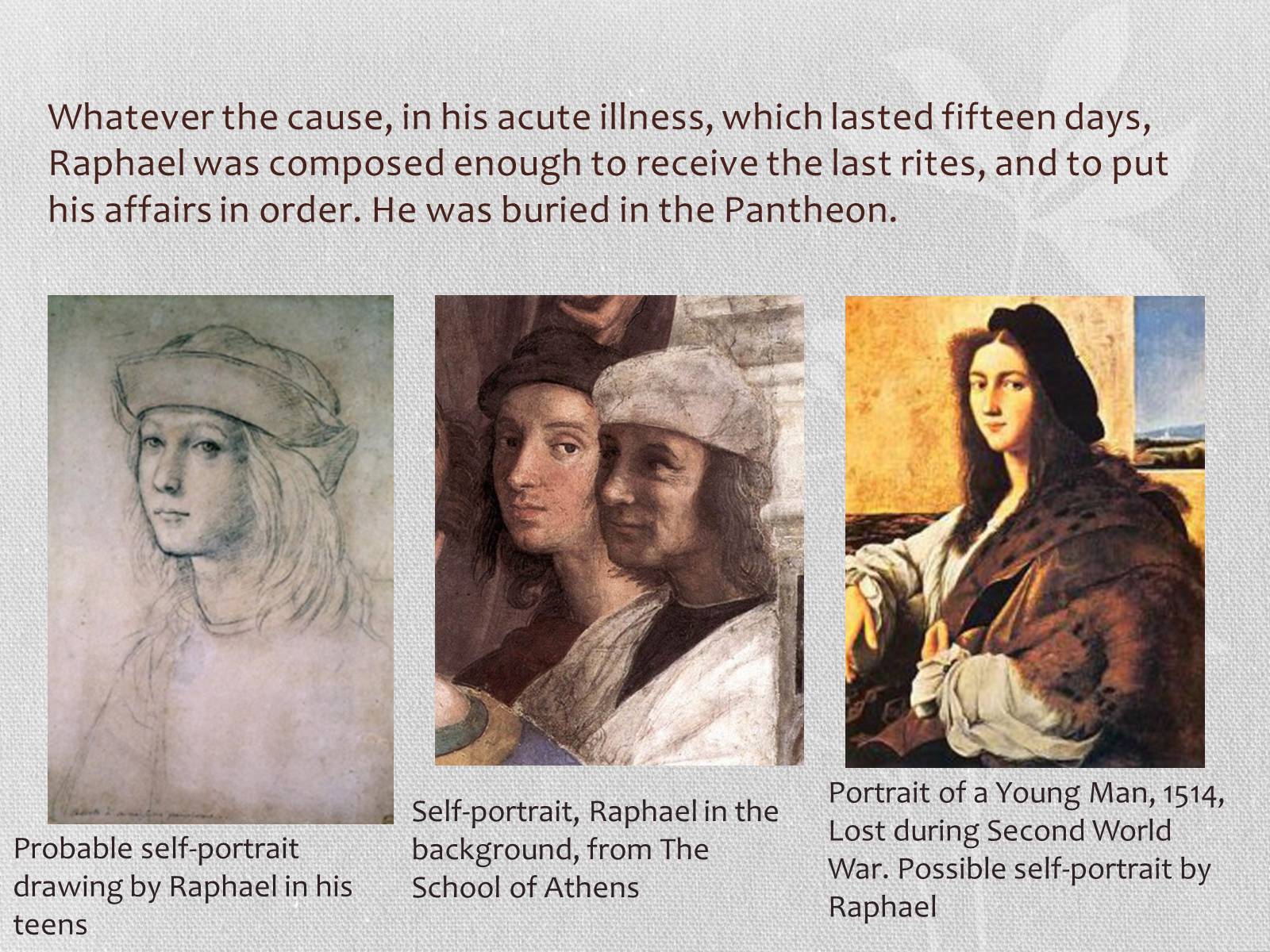
Whatever the cause, in his acute illness, which lasted fifteen days, Raphael was composed enough to receive the last rites, and to put his affairs in order. Не was buried in the Pantheon.
Probable self-portrait drawing by Raphael in his teens
Self-portrait, Raphael in the background, from The School of Athens
Portrait of a Young Man, 1514, Lost during Second World War. Possible self-portrait by Raphael